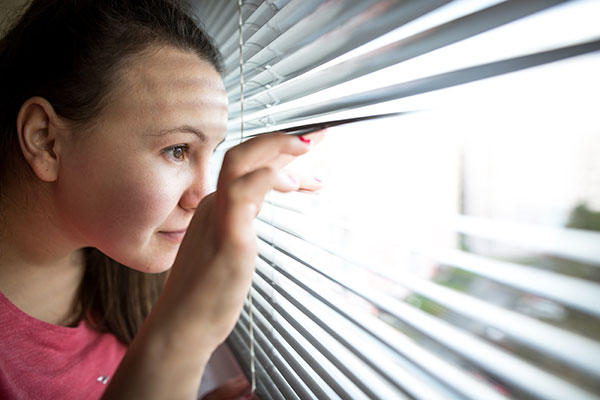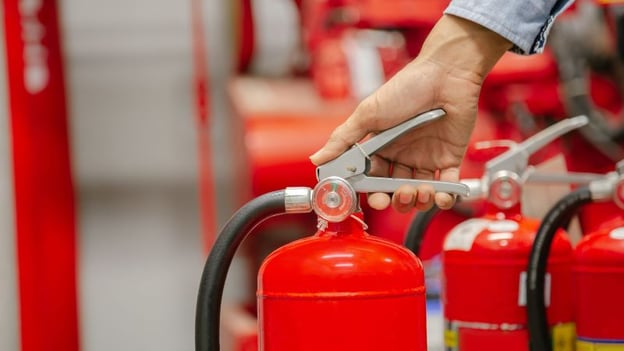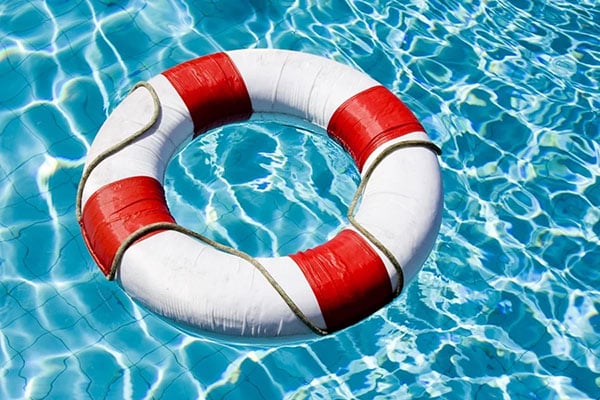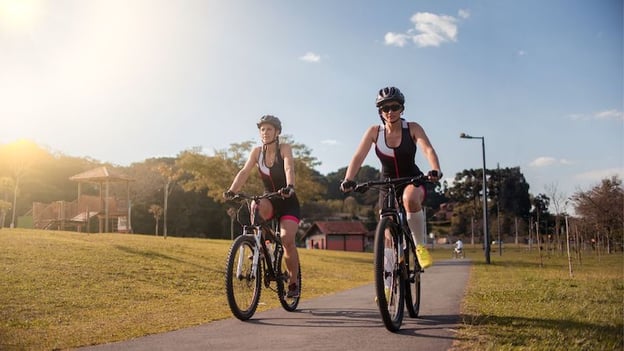According to a 2019 study in the Journal of Urban Economics, “nearly 60% of recently built single-family houses in the US, and 80% of homes in new subdivisions, are part of a homeowners association.” Many homeowners choose to live in Home Owners Association (HOA) or Condominium Owner Association (COA) neighborhoods because they appreciate the focus on community and the additional safety measures these associations provide. Neighborhood organizations are especially attractive for families with young children—families who want to live alongside residents who share their priority of creating a safer environment.
Establishing an HOA-organized neighborhood watch program is a popular method to enhance the security of your community, but there are many other ways to promote public safety. Let’s look at six tips to add value to your HOA’s or COA’s approach to community safety, get beyond neighborhood watch groups, and ensure the well-being of every resident.
1: Design a Seasonal Safety Plan
Most homeowners associations have an emergency response plan in place that accounts for security procedures and evacuation routes. But you should move beyond the basics and consider weather-related concerns that affect residents as a first step to promoting community safety.
For instance, ensuring walkability in the winter isn’t just about shoveling sidewalks or preventing icy patches during winter snowstorms. Colder weather also brings darker evening hours, when danger increases as visibility for pedestrians and bikers on wet roads is reduced. You can increase safety and walkability by running a campaign to hand out reflective tags and create more awareness about sharing streets.
Conversely, communities that struggle with soaring temperatures in the summer may want to consider programs that keep folks hydrated. From neighborhood watering troughs for pets to providing water bottles to carriers delivering mail in the afternoon heat, your organization can play a part in raising awareness about public safety and health concerns.
2. Be a Safety Resource for Residents
Contrary to public perception, keeping residents in a community safe isn’t just about policing crime. It’s also about informing the public and making sure they have the tools to protect their own neighborhoods. Here are just a few ways your HOA can become a better safety resource for your community:
- Create a homeowners guide with emergency contact info, hotlines, and information about the closest emergency responders and medical services.
- Hold seminars on home security, including arranging discounts for residents who choose to install home security systems.
- Publish a newsletter with community updates and articles with tips from security experts.
- Work with professionals to design an HOA app to keep residents in the loop and provide a platform for collaboration on community safety issues.
Establishing yourself as a source of community information makes it more likely residents will turn to their homeowners association when they have questions or concerns about neighborhood safety.
3. Educate the Neighborhood
Security measures help create safer communities, but protecting residents means genuinely caring about the challenges they face. Your HOA can provide safety seminars that address populations within your community with unique needs or those who want a refresher on safety and security topics. Bringing in local experts to lead seminars and workshops (such as the ones below) can provide real value to residents and may be the catalyst for transforming your neighborhood into a closer, more caring community.
- Playground safety
- Planting and maintaining a pet-safe yard
- Childproofing your home
- First aid & CPR refresher course
- Safe streets workshops for children
- Addressing mobility concerns for older adults
- Seasonal seminars: Installing holiday lights safely, safe trick-or-treat tips, etc.
The HOA board can put out the call for expertise within your community, or it can empower a committee to pursue partnerships with local business and public services to provide education to your residents. Many city and county officials, as well as first responders, are eager to get in front of the community so they can educate the public and avert emergencies.
4. Create Safe Shared Spaces
At some point, every HOA struggles with striking the right balance between security and privacy. Make intentional decisions about how to monitor residents and secure shared spaces within your community without invading privacy.
Before tackling surveillance, work with security experts to evaluate neighborhood lighting and ensure it’s adequate both on the streets and in spaces residents frequent. Clear sidewalks and remove obstructions that might block visibility. Scan parking lots, lobbies, and corridors for dark spaces and install motion sensor spotlights that reach hidden corners in common areas.
For additional safety, some HOAs and COAs install security cameras in pool areas, clubhouses, sports facilities, playgrounds, and even at intervals to survey streets and sidewalks. Beware, however, of laws governing where you can place security cameras and how the footage is stored and used. Avoid surveillance in any common areas that constitute an invasion of privacy and notify residents that they are being recorded. Note that cameras mounted in bathrooms and changing rooms are considered illegal in some states due to privacy laws.
5. Pay attention to ALL your residents
It sounds like a cliché, but public safety really does start at home. Think about what you can do as part of a homeowner’s association to enhance the quality of life for residents of every age. Paying attention to unmet needs in the community will ultimately translate into a closer-knit, safer neighborhood.
For example, you can sponsor programs that let residents pitch in to help older adults with yard care or install mobility ramps for neighbors with disabilities. In this case, it’s not just about HOAs increasing property values by enhancing curbside appeal. These programs should reflect a sincere concern for the well-being and safety of all residents in your community.
Think about the demographics of your neighborhood and every stage of homeownership, from newlyweds to those with pets. What kinds of programs would residents benefit from the most? Whether it’s hosting experts to give talks on cybersecurity for kids or coordinating microchipping for pets with a local animal shelter, you can find ways to provide value and care for residents in every stage of life.
6. Connect first responders to your community
One of the most effective ways to encourage community safety within HOAs and COAs is connections with local law enforcement. Organizations like the International Association of Chiefs of Police (IACP) believe teaching residents to view police as partners in patrolling your neighborhoods can pay off in safer streets and less property and violent crime. You can cultivate connections by having a police spokesperson attend HOA meetings or holding special events like neighborhood safety block parties and meet and greets.
Recently, there have been some concerns about platforms providing a channel for local police to monitor suspicious neighborhood activities. These apps often use crowdsourcing to view area security camera footage in the event of crime and aid police in their investigation. But apps like Ring’s Neighborhood say they have taken steps to ensure partnerships with police are transparent and don’t compromise homeowner privacy.
Other first responders like fire officials and city or municipal services can also benefit from having better relationships with your neighborhood. It not only strengthens trust and opens channels of communication about public safety but also provides a way to educate residents about critical issues like local fire codes or how to report power outages.
HOAs and COAs can provide tremendous value to homeowners looking for safer streets and secure neighborhoods in which to raise a family. Part of ensuring better public safety starts with thinking beyond neighborhood watches and surveillance and becoming a resource for your community. HOA boards can embrace this opportunity by establishing committees to get out there, roll up their sleeves, and extend a hand to their neighbors.
Guest Blogger: Jenna Muir
Jenna is a Utah native who specializes in all things "home" from tech to entertainment. For years, she's sought out the best ways for homeowners to secure and simplify life at home so they can make more time for the things that matter. When she's not scrolling the web, you can find her exploring local neighborhood eats or watching a movie.





